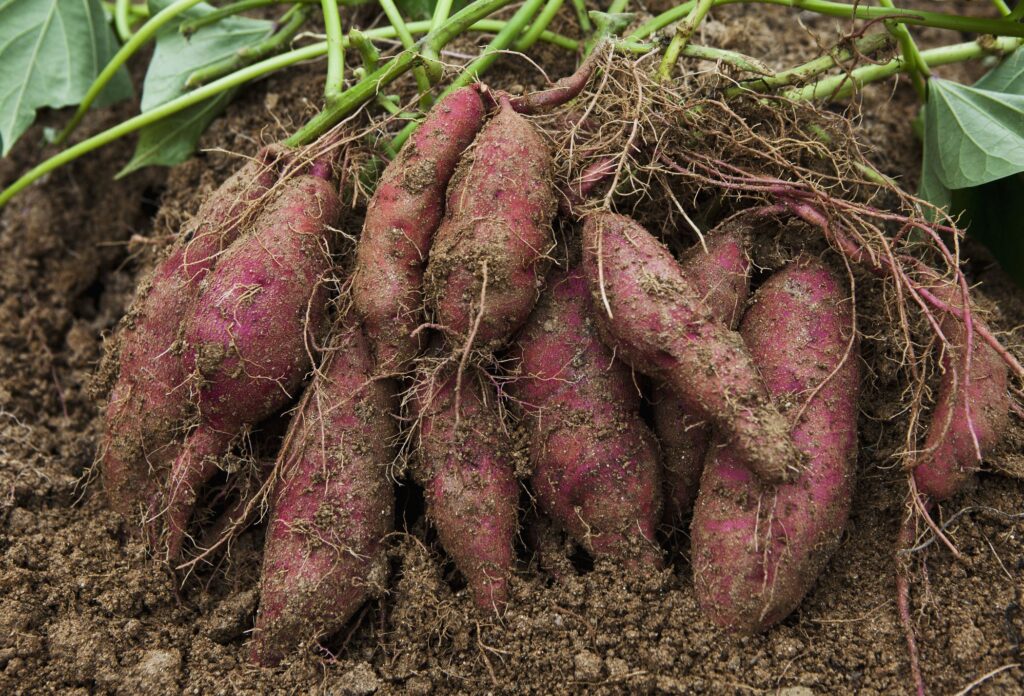The potential of sweet potato has remained largely untapped in Sub-Saharan Africa. Among the root crops production in Ghana, sweet potato (Ipomoea batatas) is ranked fourth after cassava, yam, and cocoyam. Due to ongoing research and extensive interventions in sweet potato production in Ghana, the current production estimate is expected to increase.
Sweet potatoes are popularly known in Ga as “Atomo”. It is a street food that is usually eaten fried at any time of the day. Sweet potatoes in Ghana and other African countries are often white, purple or orange fleshed.
The orange-fleshed sweet potato (OFSP) is more nutrient-dense than the other local varieties of sweet potatoes and higher in beta-carotene, which the body converts to vitamin A when taken in and contributes to healthier diets for both rural and urban populations.
Growing and consuming orange-fleshed sweet potatoes can help combat high levels of childhood stunting. With as little as 50 grammes (less than 2 ounces), these rich sweet potatoes can meet a child’s daily requirement for vitamin A, according to growing scientific evidence. Families can now include the vitamin-rich orange-fleshed sweet potatoes in their diets since it can be utilised to create infant food, flour for bread and pastries, among other things.
Although sweet potatoes cannot completely eradicate sub-Saharan African malnutrition, they can significantly improve children’s diets and the agricultural sector as a whole because this will increase demand for sweet potatoes.
Sweet potato requires fewer inputs and less labour than other staple crops. It tolerates marginal growing conditions, such as dry spells or poor soil. Sweet potato provides more edible energy per hectare per day than wheat, rice, or cassava. It’s ability to produce better yields in poor conditions with less labour makes sweet potato particularly suitable as a crop for households.
It is a wonderful crop that has both health and climate benefits, as well as economic potential that will benefit agribusinesses and smallholder farmers alike, including women and youth, creates jobs, and promotes entrepreneurship.

